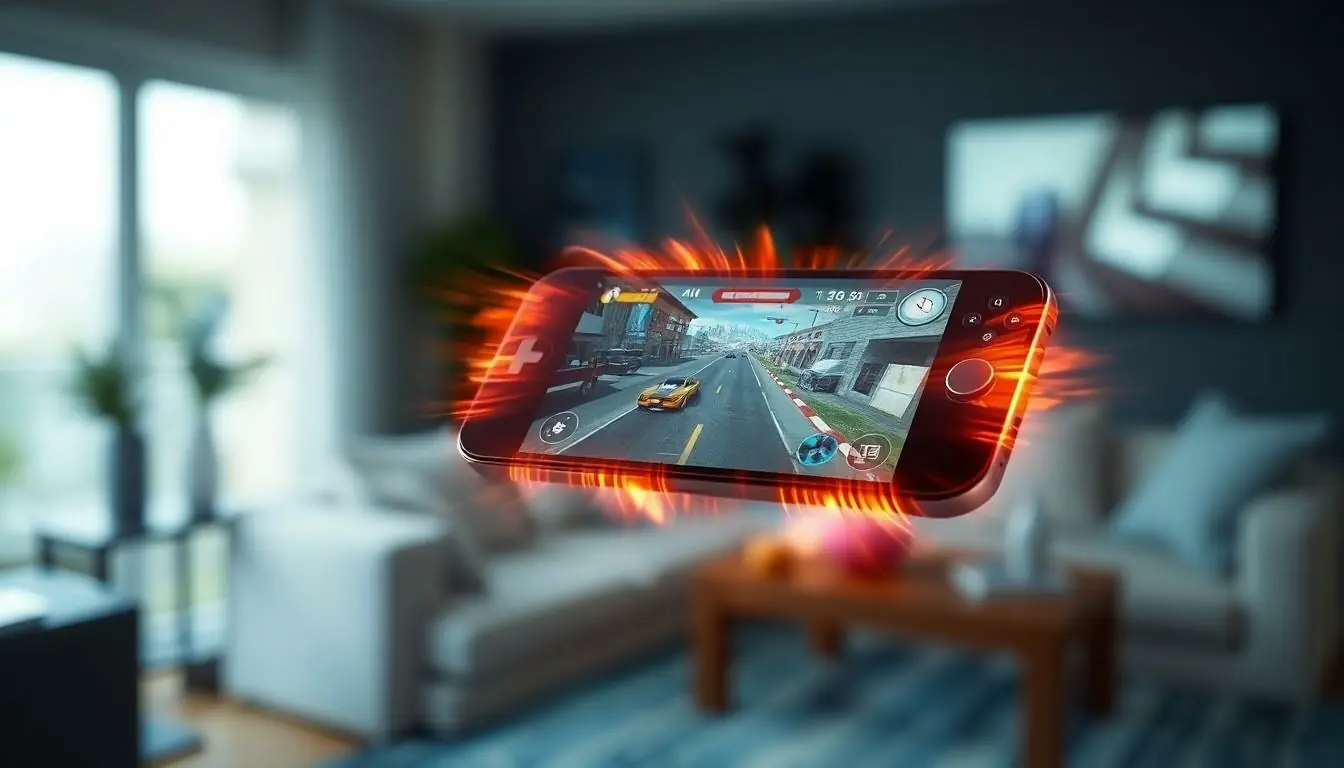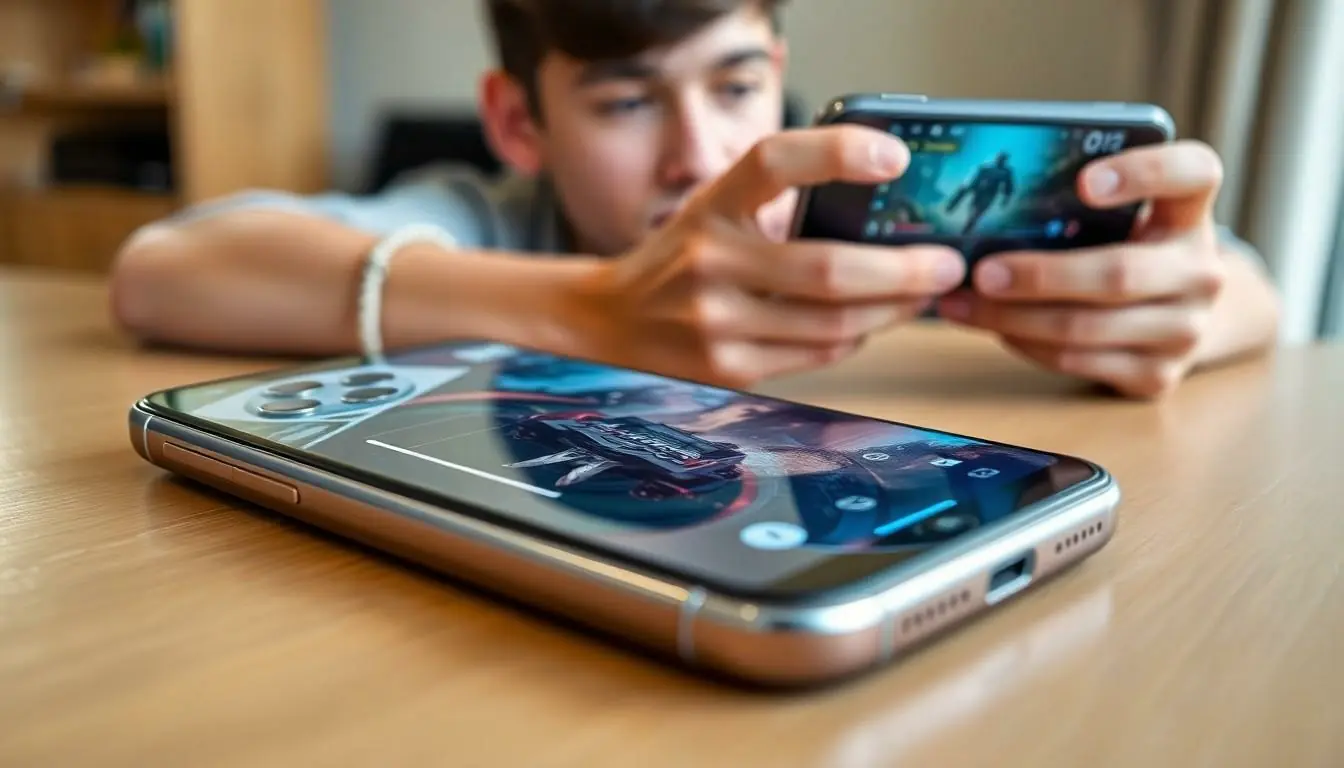Ever noticed your phone feeling like it just ran a marathon? It’s not training for the Olympics; it’s simply grappling with the demands of modern life. From streaming videos to playing graphics-heavy games, smartphones work hard to keep users entertained and connected. But all that hard work can lead to one fiery issue: overheating.
Table of Contents
ToggleUnderstanding Phone Temperature
Smartphones often experience temperature increases due to internal and external factors. Intensive activities such as streaming videos and playing graphics-heavy games demand substantial processing power. Load on the CPU and GPU generates heat during these processes.
Device cases can also affect temperature regulation. Some materials trap heat more effectively than others, causing the device to feel hotter. In high ambient temperatures or during direct sunlight exposure, smartphones serve as heat traps, worsening the situation.
Battery charging significantly contributes to heat generation. Fast charging may produce more heat compared to standard charging methods. When using the phone while charging, additional strain on the device amplifies heat production.
Apps running in the background contribute to ongoing demands on resources. Notifications and updates increase processing requirements, resulting in more heat. Structuring tasks efficiently and minimizing the number of active applications can reduce this excess heat.
Maintaining software updates ensures optimal performance and efficiency. Manufacturers release patches and updates that often address performance issues leading to overheating. Additionally, avoiding phone usage during software updates allows the device to cool down.
Environmental control plays a vital role in managing temperature. Keeping the phone in cooler areas or using heat-resistant cases helps dissipate heat. Regular device maintenance, such as cleaning ports and ensuring ventilation, extends the lifespan of the smartphone and prevents overheating.
Common Reasons Why Phones Get Hot

Smartphones commonly experience overheating, often due to demanding tasks.
Heavy Usage Scenarios
Intense activities, like playing 3D games or streaming high-definition videos, generate considerable heat. High-performance demands from the CPU and GPU lead to increased temperatures. The device works hard to maintain smooth functionality, resulting in heat buildup. Using location services or multiple apps simultaneously intensifies heat generation. Extended usage without breaks can compound heating issues, especially during resource-heavy tasks. Keeping the device plugged in while performing these activities further exacerbates the situation.
Background Apps and Services
Background apps or services contribute significantly to smartphone overheating. Each application continues to use resources, causing the processor to work harder. Notifications, updates, and syncing features increase processing demand even when the phone appears idle. As apps run silently in the background, they drain battery life and add to overall heat production. Managing these applications by closing unnecessary ones helps reduce heat. Adjusting settings to limit background activity can effectively mitigate overheating issues.
Hardware Factors Contributing to Heat
Smartphones generate heat due to various hardware factors. These components work together, causing temperature increases during usage.
Processor and Graphics Load
High-performance demands from the processor and graphics unit significantly contribute to heat generation. Activities like gaming or streaming require the CPU and GPU to work harder, which boosts temperature levels. Increased workload for these components translates heat into the internal system. When graphics-intensive applications run, the system struggles to keep cool, resulting in noticeable warmth. Over time, peak performance may lead to thermal throttling, reducing efficiency. Monitoring usage patterns can help identify heavy processes that contribute to overheating. Optimizing settings also aids in managing heat levels.
Battery Issues
Battery performance plays a crucial role in smartphone heating. Lithium-ion batteries generate heat during charging and discharging cycles. Fast charging technology accelerates heat production, especially when devices run apps simultaneously. If battery health declines, it struggles to maintain efficiency, leading to excess heat output. Devices left plugged in for extended periods may trap heat, further worsening the situation. Maintaining optimal battery health requires regular checks and software updates. Users benefit from avoiding extreme temperatures and using certified chargers to mitigate heat risks. Prioritizing battery care helps extend lifespan and manage heat generation effectively.
Mitigation Strategies
Mitigating smartphone overheating involves several practical approaches.
Tips for Keeping Your Phone Cool
Maintain low usage during intensive tasks. Allow breaks between gaming or streaming to prevent excessive heating. Turn off unnecessary background apps to reduce processor load. Use airplane mode when not using cellular functions to lighten the workload on the device. Store phones in cooler environments, avoiding direct sunlight or hot surfaces. Invest in heat-resistant cases that promote airflow, further helping to dissipate heat. Regularly clean ports and vents to ensure optimal ventilation and minimize dust buildup.
When to Seek Professional Help
Consult a professional if overheating persists despite mitigation strategies. A malfunctioning battery may require replacement and pose safety risks. Seek assistance if the phone exhibits unusual performance issues, like thermal throttling or sudden shutdowns. Noticing physical damage, such as warping or swelling, warrants immediate attention from a technician. Consider professional evaluation if software updates or factory resets fail to resolve overheating. Proper diagnostics can identify underlying hardware issues that may need specialized repair or replacement.
Smartphone overheating is a common issue that can arise from various factors. Understanding the root causes helps users take proactive measures to manage heat effectively. By optimizing usage patterns and maintaining device health, individuals can significantly reduce the risk of overheating.
Incorporating strategies like limiting background apps and ensuring proper ventilation can enhance performance and extend the device’s lifespan. If overheating persists despite these efforts, seeking professional assistance is crucial to address potential hardware issues. Prioritizing smartphone care not only improves user experience but also safeguards the device’s functionality.





